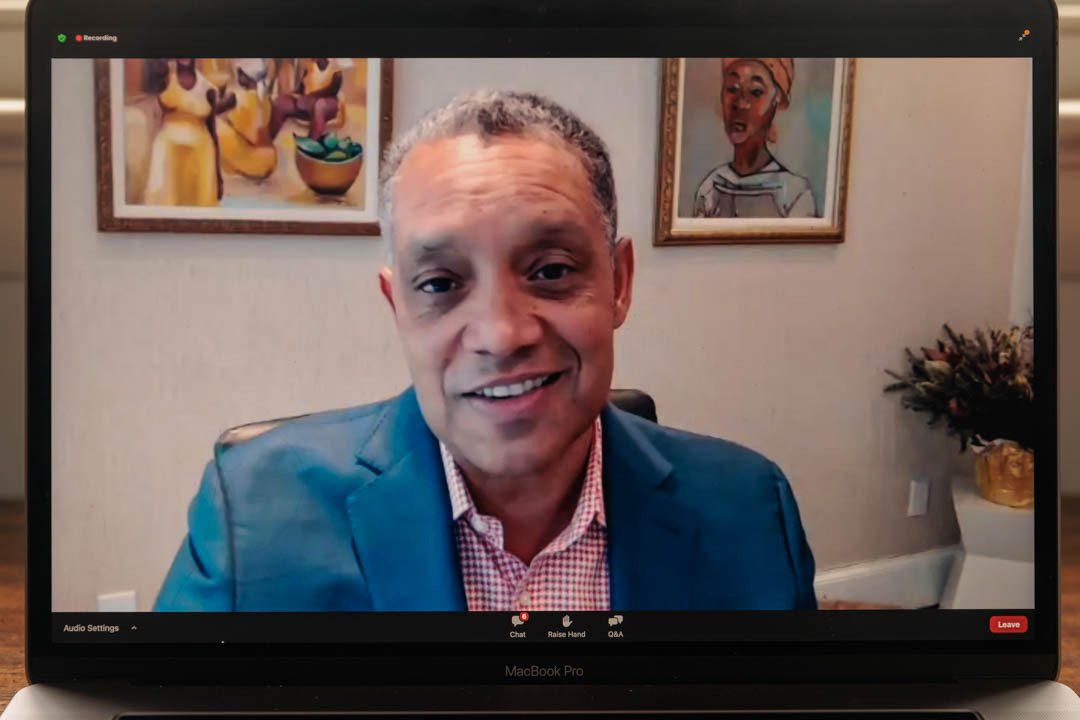By Greg Varner
For African American students, attending a predominantly white college or university can be isolating and traumatic. They may encounter various forms of psychological abuse, causing damage to their self-esteem and well-being.
This was the topic on Thursday of the second annual MLK Lecture sponsored by George Washington University’s Graduate School of Education and Human Development (GSEHD), “Examining the Master's House: African American Students Experiencing Psychological Violence at Predominantly White Institutions,” delivered virtually by Deniece Dortch, assistant professor of higher education administration.
The title of Dortch’s lecture was inspired by the late Audre Lorde, poet and author of the essay collection, “The Master’s Tools Will Never Dismantle the Master’s House.”
The event was introduced by assistant professor Dwayne Kwaysee Wright, director of Diversity, Equity and Inclusion Initiatives at GSEHD, who also moderated the question-and-answer period at the end.
After brief welcoming remarks, Wright quoted from Martin Luther King Jr.’s “Letter from Birmingham City Jail,” written in April 1963 in response to white clergymen who had urged King to put the brakes on civil rights demonstrations and rely instead on court cases to further the cause of integration. In his response, King famously wrote, “Injustice anywhere is a threat to justice everywhere.”
Dortch presented research findings gleaned in a series of interviews with pseudonymously named doctoral students at a midwestern school, also called by a pseudonym.
One of Dortch’s participating doctoral students, “Assata,” was pregnant with her fifth child when her department chair told her, “Oh, we’re going to invest in birth control for you.” White women told her she was setting the feminist movement back.
Another doctoral student was told by an adviser, “I’m probably not supposed to tell you this, but I actually pulled your application out of the reject pile,” setting up an inappropriate level of indebtedness. Such statements can make students feel trapped and skew already unequal power relations even further.
Racism, Dortch said, complicates and magnifies such abuse. In a school where hardly any students of color were present, “Monica” reported being asked “Do you work here?” Structurally isolated, “Ivy” felt like an imposter.
Black students may be met with facial expressions suggesting that they are viewed as incompetent, unwelcome or otherwise suspect. Their research may be considered inferior or cited without attribution. They may encounter peers who think their own theory outweighs a Black person’s actual experience.
“Insinuating indebtedness, academic theft, racial mocking, perpetuating racist ideas, and structural isolation are examples of psychological violence,” Dortch said.
Without dismantling systems of oppression, cycles of violence will continue in the academy, Dortch concluded. Each one of us in academia can benefit from the system, but policies should be revamped and curriculums revised to be more inclusive of collectivist practices. Tenure processes should also be restructured and new models of mentoring introduced.
“We cannot dismantle the system from within the system because we benefit from it, sustain it, and perpetuate it at the same time,” Dortch said. “We can, however, disrupt the usual cycles of violence within academia and especially at predominantly white institutions such as the one in which the study was based.”
A response to Dortch’s talk was given by Laura Engel, a GSEHD associate professor of international education and international affairs, before questions were taken from the audience, numbering more than 150 at its peak.
“The rich accounts provided by the study participants really give us a devastating picture,” Engel said.
There are two main traditions in scholarship relating to education, Engel said. The “consensus tradition,” exemplified by figures such as Émile Durkheim and Talcott Parsons, “tries to illuminate ways that education preserves society.” In contrast, the conflict tradition is an approach anchored more in the study of power dynamics. Dortch’s scholarship, Engel said, is rooted in the latter tradition.
Most of the African American doctoral students in Dortch’s study, Engel noted, were “inclined to self-silence” in response to the difficulties they faced. Dortch’s research, Engel said, presents “a loud and clear call to action” and points to the need for ongoing consideration of diversity, equity, and inclusion in higher education.
“This isn’t just about working in doctoral studies,” Engel said, “but it’s about our entire community.”
After repeating the quotation from “Letter to Birmingham Jail” with which Wright introduced the event, Engel cited the subsequent sentences in King’s letter: “Injustice anywhere is a threat to justice everywhere. We are caught in an inescapable network of mutuality, tied in a single garment of destiny. Whatever affects one directly affects all indirectly.”
In response to a question about whether she had seen any disruptions of violence during her time as a faculty member, Dortch said she had not.
“Lorde tells us that when we use the master’s tools, only the smallest and narrowest changes are possible,” Dortch said. “When considering the work of equity and justice in higher education, there are lots of excuses given as to why ‘we’ are unable to move the needle (time, lack of funding, not enough human capital, etc.). It seems as though the espoused values around equity and justice never quite seem to match our values in use.
“But do you ever notice when people in power care about something that obstacles are removed with ease, rules seem to disappear and funding seems to magically appear? It is because when the master wants the house to move, it moves.”



